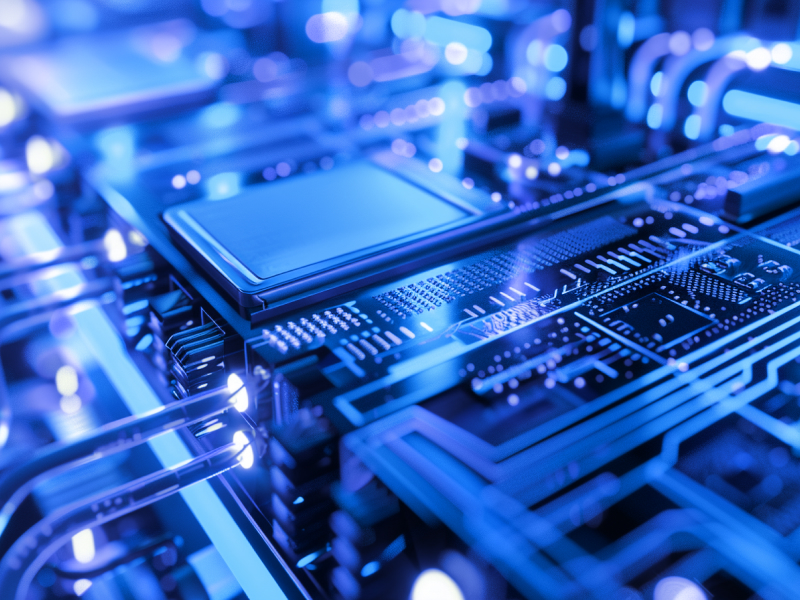Key developments in AMD’s chip architecture
At the recent Computex trade show in Taiwan, Lisa Su, CEO of AMD, provided detailed insights into the company’s strategic direction for integrating advanced computing capabilities in AI data centers and AI PCs.
The strategy highlights AMD’s push to redefine computational infrastructure with a clear focus on artificial intelligence. By implementing major upgrades to its CPU, GPU, and NPU architectures, AMD aims to facilitate seamless AI operations across a wide spectrum of applications, from large data centers to individual personal computers.
This holistic approach seeks to position AMD as a leader in the AI technology sector, so that its chip solutions meet the diverse needs of modern AI applications. These upgrades improve the processing speed and efficiency and improve the energy consumption profiles of these chips, making them more suitable for the high demands of AI computations.
AMD’s product roadmaps and releases
AMD Instinct accelerator updates
AMD’s announcement at Computex introduced a refined roadmap for its Instinct accelerator series, highlighting the company’s commitment to consistent innovation with annual updates.
The roadmap begins with the AMD Instinct MI325X, scheduled for release in the fourth quarter of 2024. This accelerator is set to feature 288GB of HBM3E memory and a memory bandwidth of 6 terabytes per second, positioning it as a formidable contender in the high-performance computing sector.
Following the MI325X, the AMD Instinct MI350 series, which will employ the new AMD CDNA 4 architecture, is on track for a 2025 launch.
By 2026, the roadmap culminates with the MI400 series, which will incorporate the AMD CDNA “Next” architecture. This series targets an ambitious 35-fold increase in AI inference performance compared to its predecessors equipped with the AMD CDNA 3 architecture, promising unprecedented improvements in speed and efficiency for AI-driven applications.
Advances in AMD Epyc and Ryzen processors
AMD also spotlighted significant advancements in its processor lines, specifically the AMD Epyc and Ryzen series. The 5th Generation AMD Epyc processors, built on the advanced “Zen 5” core, are set for a release in the second half of 2024. These processors continue AMD’s tradition of pushing the boundaries of performance and efficiency in server environments.
In personal computing, AMD introduced the AMD Ryzen AI 300 Series and the AMD Ryzen 9000 Series. The Ryzen AI 300 Series represents the third generation of AMD’s AI-enabled mobile processors, while the Ryzen 9000 Series extends this innovative technology into desktop computing, catering to the demands of high-performance gaming, content creation, and productivity applications.
These new processors are designed to greatly boost AI capabilities in laptops and desktops, respectively.
These announcements highlight AMD’s strategy to maintain a competitive edge in the rapidly advancing field of AI by continually updating and improving its range of processors and accelerators. Through these efforts, AMD meets current market demands but also shapes future technological landscapes, providing the tools necessary for developers and enterprises to push the boundaries of what AI can achieve.
Innovating PC capabilities with advanced AI features
Improvements and partnerships for next-generation PCs
AMD is gearing up to transform the personal computing landscape through its latest processors, which are designed to surpass the performance benchmarks set by Microsoft’s Copilot+ initiative.
This standard emphasizes improved AI capabilities, pushing hardware manufacturers to innovate beyond traditional computational limits. AMD’s strategic collaborations with industry leaders such as HP, Lenovo, and Asus are key in this initiative.
Partnerships aim to integrate AMD’s advanced processors into forthcoming PC models, elevating the user experience by incorporating superior AI-driven functionalities.
These next-generation PCs, powered by AMD processors, are expected to meet and even exceed the evolving demands of modern software environments and user expectations.
AMD’s collaboration with top-tier PC manufacturers makes sure that these capabilities are well-integrated, tested, and optimized across various hardware platforms, offering users seamless and efficient performance. AMD’s – through this strategic drive – is helping its partners differentiate their products in a competitive market, offering cutting-edge technology that appeals to both enterprise-level customers and individual consumers.
AI processing performance and efficiency
The AMD XDNA 2 NPU core architecture marks a major advancement in neural processing units. With the capability to deliver up to 50 tera operations per second (TOPs) of AI processing performance, the XDNA 2 sets a new industry standard for speed and efficiency.
It’s the only NPU in the market that supports the Block FP16 data type, a feature that improves computational accuracy without sacrificing performance.
Improved precision is key for applications requiring high-fidelity data processing, such as voice recognition, image processing, and complex predictive algorithms. Use of the Block FP16 data type means that AMD’s NPUs can handle more nuanced and detailed AI tasks, making them particularly suitable for professional and creative applications where precision is a priority.
High TOPs rating means that these processors are capable of handling intensive AI tasks, reducing latency and improving the responsiveness of AI applications.
Whether for gaming, content creation, or business analytics, AMD’s XDNA 2 architecture is designed to meet the high expectations of a broad range of users, so that devices keep pace with current software demands and also future-proof for emerging AI technologies.
Driving Edge AI innovation with adaptive computing
Versal AI Edge Series Gen 2
AMD’s Versal AI Edge Series Gen 2 is a go-to solution in the market for edge AI applications. This series combines FPGA programmable logic, next-generation AI Engines, and embedded CPUs into a single chip – offering a highly efficient platform for real-time AI inference and post-processing tasks.
Integrating these technologies allows devices to process data on the edge without latency issues associated with cloud computing, which is critical for applications that require immediate data processing and decision-making.
The FPGA component provides customizable hardware acceleration, which can be tailored to specific AI tasks, improving the performance and efficiency of applications such as image recognition and data analysis.
Embedded CPUs handle standard computing tasks, ensuring smooth operation and system management. The AI Engines, optimized for deep learning tasks, provide the computational power needed to perform complex AI operations quickly and efficiently.
Combination of these technologies in a single chip reduces the physical footprint of the hardware and lowers the power consumption, making it ideal for deployment in environments where space and power are at a premium.
The Versal AI Edge Series Gen 2 is – as such – a must-have tool for businesses looking to deploy sophisticated AI solutions at the edge, from autonomous vehicles to industrial automation systems.
Real-world applications and industrial partnerships
AMD’s adaptive computing technology is key across industries, providing the computational power needed for a range of specialized applications.
For instance, Illumina utilizes this technology to enhance genome sequencing. The high computational demands of sequencing large volumes of DNA data benefit greatly from AMD’s technology, which speeds up the processing time and increases the accuracy of sequencing, powering faster and more precise genetic analysis.
In the automotive sector, Subaru employs AMD’s technology in its Advanced Driver-Assistance Systems (ADAS) to support its ambitious “zero-fatalities” mission by 2030. The real-time processing capabilities of AMD’s technology allow for quicker responses and more accurate decision-making by the vehicle’s systems, potentially reducing accidents and improving road safety.
- Canon: Canon leverages AMD’s Versal AI Edge Series for its Free Viewpoint Video System, which is revolutionizing the viewing experience in live sports broadcasts and webcasts. This system allows viewers to enjoy a more immersive viewing experience by providing multiple angles and perspectives, all processed in real-time to ensure smooth playback and high image quality.
- Hitachi Energy: Hitachi Energy uses AMD’s adaptive computing technology in its High Voltage Direct Current (HVDC) protection relays. Relays use real-time processing to predict and manage electrical overvoltages, thus preventing potential damage to power systems and reducing downtime.
Providing powerful and efficient computing solutions is helping AMD become a technology supplier, while still being a strategic partner that enables companies to innovate and maintain competitive advantages in their fields.





